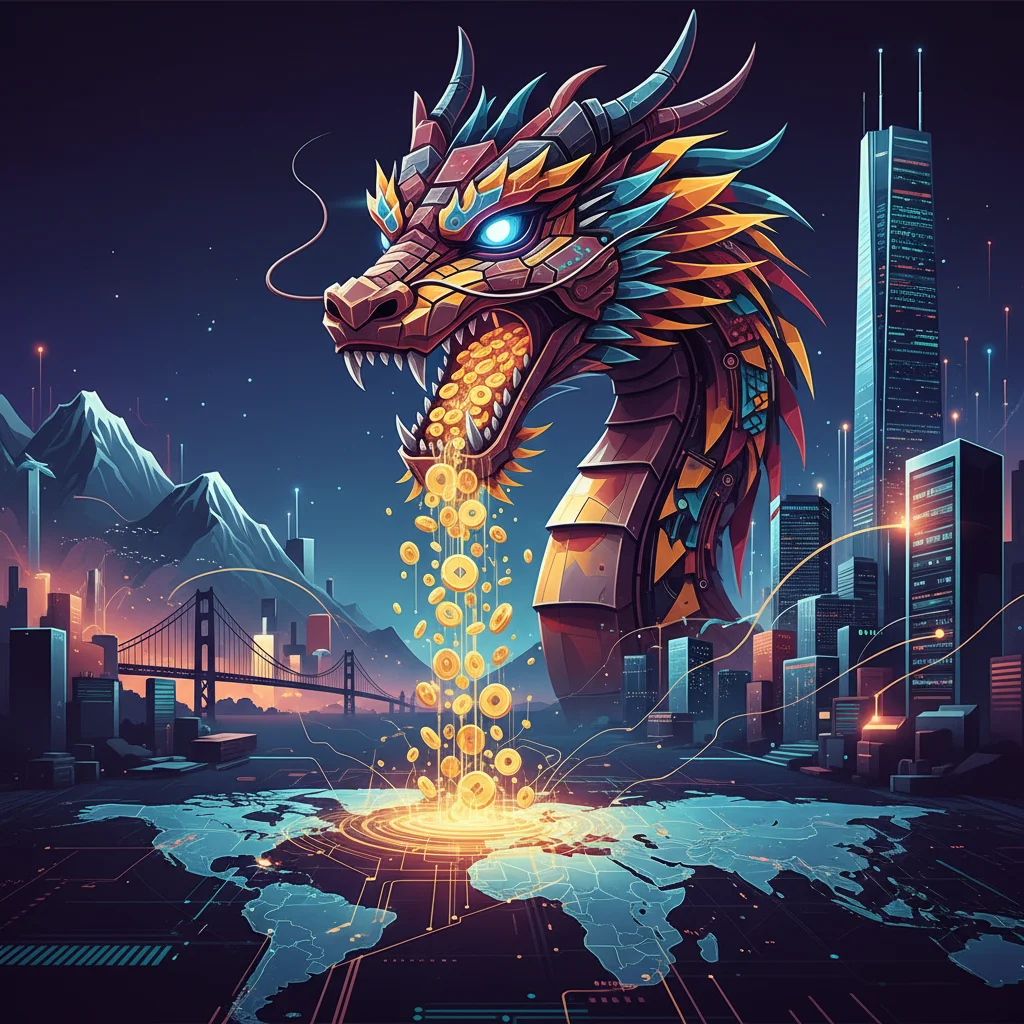
The Dragon’s Wallet: How China’s State-Backed Venture Capital is Reshaping Global Technology & Finance
For decades, the global narrative of innovation has been written in Silicon Valley. Venture capital, flowing from the storied firms of Sand Hill Road, has been the lifeblood of technological progress, fueling everything from the internet revolution to the rise of social media. This market-driven, risk-taking model of finance has long been considered the undisputed champion of creating world-changing companies. But across the Pacific, a different, far more centralized playbook is being executed at an unprecedented scale—one that could fundamentally alter the future of technology, investing, and the global economy.
In a compelling letter to the Financial Times, Professor Cornel Ban of Copenhagen Business School highlighted a critical trend: China’s systematic use of state-backed venture capital to close the technology gap with the West. This isn’t just about competing; it’s a calculated, state-orchestrated strategy to achieve technological sovereignty and dominate the industries of the future. This “Red VC” model, powered by colossal state funds, is not just an economic policy—it’s a geopolitical gambit with profound implications for investors, business leaders, and the very structure of international finance.
Understanding the “Red VC”: China’s State-Directed Investment Machine
Unlike the Western model where private limited partners (LPs) like pension funds and endowments invest in VC funds seeking purely financial returns, China’s approach is a hybrid. The primary vehicles are known as Government Guidance Funds (GGFs). These are massive pools of capital established by national, provincial, and municipal governments. Their mandate is twofold: generate financial returns, but more importantly, guide capital towards strategic industries that align with national policy goals.
These goals are explicitly laid out in ambitious industrial plans like “Made in China 2025.” The objective is to transition China from a manufacturer of low-cost goods to a global leader in high-tech fields. This includes:
- Semiconductors and Integrated Circuits
- Artificial Intelligence (AI)
- Quantum Computing
- Biotechnology and Pharmaceuticals
- Aerospace and Advanced Manufacturing
GGFs operate by co-investing with private VC funds or investing directly into startups in these designated sectors. By providing a significant chunk of the capital and de-risking the investment for private players, the state effectively “guides” the market’s hand. According to a report by the Center for Security and Emerging Technology (CSET) at Georgetown University, by 2020, Chinese GGFs had a target size of approximately $1.6 trillion, a figure that dwarfs the entire US private venture capital industry. While not all of this capital has been deployed, the sheer scale of ambition is staggering and signals a fundamental shift in the landscape of global finance.
Beyond the Bourse: Why Marseille's Luxury Real Estate is the Ultimate Alternative Investment
To better understand the fundamental differences, let’s compare the two dominant models of venture capital investing.
| Feature | Traditional US Venture Capital | Chinese State-Led Venture Capital (GGFs) |
|---|---|---|
| Primary Goal | Maximize financial returns (ROI) for LPs. | Achieve national strategic goals; financial returns are often secondary. |
| Capital Source | Private LPs (pension funds, endowments, family offices). | Primarily government entities, state-owned enterprises, and state banks. |
| Decision-Making | Market-driven, based on perceived commercial potential and scalability. | Policy-driven, aligned with industrial plans like “Made in China 2025.” |
| Risk Tolerance | High, but focused on commercial viability and exit potential (IPO, acquisition). | Very high, especially for “deep tech” with long R&D cycles and uncertain commercial viability but high strategic value (e.g., semiconductors). |
| Key Sectors | Historically software, internet, consumer tech; increasingly AI and biotech. | Strategic “hard tech”: semiconductors, AI, quantum computing, aerospace, biotech. |
The Strategic Imperative: Why This Matters for the Global Economy
China’s state-led push into venture capital is a direct response to geopolitical pressures, particularly the ongoing tech rivalry with the United States. When the U.S. imposed restrictions on Chinese tech giants like Huawei and limited access to advanced semiconductor technology, it exposed a critical vulnerability. Beijing realized that relying on foreign technology was a strategic liability. The GGFs are the financial engine for building a self-reliant domestic tech ecosystem, from chip design software to advanced lithography machines.
This has massive implications for the global stock market and supply chains. For decades, the tech world has operated on a symbiotic, if competitive, relationship. A chip designed in California might be manufactured in Taiwan using Dutch equipment and assembled into a phone in China. China’s strategy aims to internalize as much of this value chain as possible. Success would mean less reliance on Western firms, potentially disrupting revenues for major players in the semiconductor and tech hardware sectors. This is a long-term trend that those involved in international trading and investing must monitor closely.
Fintech, Blockchain, and the New Financial Order
Nowhere is this state-directed innovation more apparent than in financial technology, or fintech. While the West debates the regulation of cryptocurrencies and blockchain applications, China has moved decisively. It has effectively banned private cryptocurrencies while simultaneously launching one of the world’s first central bank digital currencies (CBDCs), the digital yuan (e-CNY).
This isn’t just a technological upgrade to its banking system. The e-CNY gives the state unprecedented visibility into and control over the economy. It’s a piece of state-controlled financial technology designed to increase efficiency, combat illicit activity, and, crucially, challenge the global dominance of the U.S. dollar. State-backed funds are pouring capital into companies building the infrastructure for this new digital economy, from blockchain-based settlement systems to AI-powered credit scoring. This represents a fundamental rethinking of the relationship between technology, the state, and the economy.
Argentina's Economic Ghost Story: A Haunting Warning for the US Federal Reserve
Risks and Realities: Can a State Really Pick Winners?
Despite the immense capital and political will, China’s model is not without significant challenges. A state-directed approach to investing carries inherent risks that could undermine its long-term success.
- Misallocation of Capital: Critics argue that government officials, rather than experienced investors, are not the best judges of technological or commercial potential. This can lead to capital being funneled into politically-connected or grandiose projects that never achieve viability, creating massive waste. There have already been reports of GGFs struggling with inefficiency and a lack of qualified fund managers (source).
- Creating Bubbles: The sheer volume of money flooding into specific sectors can create valuation bubbles, where companies are funded at unrealistic prices, leading to inevitable corrections that can destabilize the market.
- Stifling True Innovation: The core of the Silicon Valley model is its tolerance for failure and its embrace of disruptive, outsider ideas. A state-guided system may favor incremental improvements within established priorities, potentially “crowding out” truly revolutionary ideas that don’t fit the government’s current five-year plan.
These are not trivial concerns. The success of China’s economic model will depend on its ability to balance central guidance with the entrepreneurial dynamism that has powered its growth for the past four decades.
Steel and Sovereignty: Decoding the UK-EU Tariff Standoff and Its Impact on the Global Economy
Conclusion: A New Paradigm for Global Investors
The rise of China’s state-backed venture capital machine is a defining feature of the 21st-century global economy. It challenges the long-held Western belief that free-market capitalism is the only path to technological innovation. As Professor Ban’s letter rightly points out, this is a deliberate and well-funded strategy to reshape the global order, and it’s already having a profound impact on everything from semiconductor supply chains to the future of banking.
For investors and business leaders, ignoring this trend is not an option. It requires a more nuanced understanding of the interplay between politics, finance, and technology. The game is no longer just about identifying the next unicorn in a garage; it’s about understanding national industrial policies, geopolitical tensions, and the flow of state capital. The dragon has opened its wallet, and the world of investing will never be the same.


